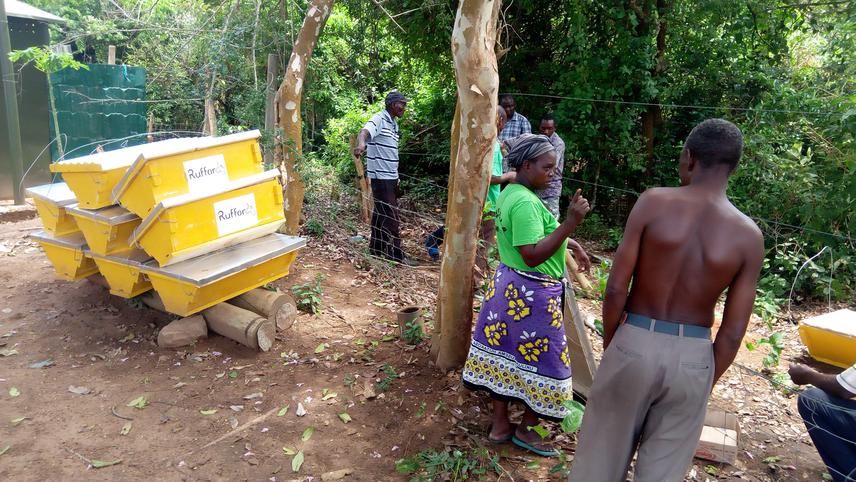Jennifer Wanyingi
Other projects
29 Apr 2020
Mitigation Measures for Beekeepers and Honey Badger Conflict in Shimba Hills Ecosystem, Kenya
Protected areas are surrounded by communities who are dependent on subsistence agriculture of maize and beans for their livelihoods. Recent encroachment into the Protected Areas has led to human-wildlife conflicts due to elephant crop raiding. Whilst various measures have been used in Shimba Hills to mitigate conflicts, palatable crops still attract elephants into farmlands. Honeybees are crucial for pollination, can increase the incomes through sale of beehive products and at the forest edge reduces crop loss. This project aims at assessing low-cost bee keeping as an income generating activity, elephant barrier and to build the capacity of rural communities.

Shimba hills is situated in Kwale County within the Coast Province, Kenya. It is located 35 kilometres south of Mombasa, Kenya between 40 05’ -4021’S and 39015’-390 30’E .It is a site of great concern due to its high biological richness and status as an indigenous homeland of sable antelopes (Hippotragus niger roosevelti) and high elephant population. It is a prime example of a location where well-intended management and conservation initiatives have led to even greater conservation dilemmas. The area experiences a humid semi-equatorial climate of an average monthly temperature ranging from 240C to 280C and an annual precipitation of 1200mm. SHNR is ideally located in the wettest portion of Kwale District and the hills are a primary water source for the area. The average annual precipitation varies between 500 and 1,500 mm (Shimba Support Group, 2007).
The highest yearly precipitation occurs from March-June when the long rains take place and later in the year during the short rains of October and November. The vegetation in the Protected Area has an intricate montage of open grasslands, bush-lands, woodlands, and forests. The mosaic of high-canopy forest, grass, deciduous forest and thicket provides ideal habitat for a diverse range of species (Kiiru, 1996). The remnant humid tropical ecosystem contains endemic, threatened, and endangered flora. Being one of the richest areas of plant endemism in Kenya, Shimba Hills ecosystem has a total of 1,396 plant species that are endemic to Shimba Hills and that the forest habitat holds more than half of Kenya's rare tree species. Similar to other protected areas in Africa, the limited size of Shimba hills and the Mwaluganje elephant sanctuary cannot adequately sustain the rapidly growing resident elephant population coupled with increasing human population and monoculture farming has led to encroachment into the Protected Area.